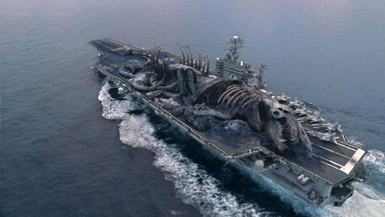|
|
Movie Review: Pacific RimBy Matthew HuntleyJuly 16, 2013
I was hoping the movie would have gone off in directions that were different from what we’ve come to expect from the genre, but the filmmakers are once again under the impression the only thing the audience cares about are battle sequences, mayhem and special effects. Personally, I was more interested in the science and emotional and physical ramifications of the neural drifting and the how the characters’ recent tragedies affected their motivations. But the screenplay merely brushes over these points and settles on stock, superficial pathos that doesn’t really make us care about anyone or anything. We know well in advance how everything is going to pan out, and that honestly makes the movie dull. There will be many who claim Pacific Rim perfectly fits the mold of silly summer fun, but therein lies the problem: because it fits a mold so well, the movie comes across as moldy. While its effects go above and beyond, everything else about it feels dumbed down and templatized. Even with the summer movie-going season factor taken into account, I’m tired of hackneyed plots with one-note characters. Because Hollywood has come so far technologically, the industry needs to put it upon itself to be more creative with its storytelling so grandiose special effects take on new meaning. Simply throwing greater visual and aural qualities at us isn’t enough. How about raising the narrative bar too?
|

|
|
|

|
Friday, November 1, 2024
© 2024 Box Office Prophets, a division of One Of Us, Inc.


